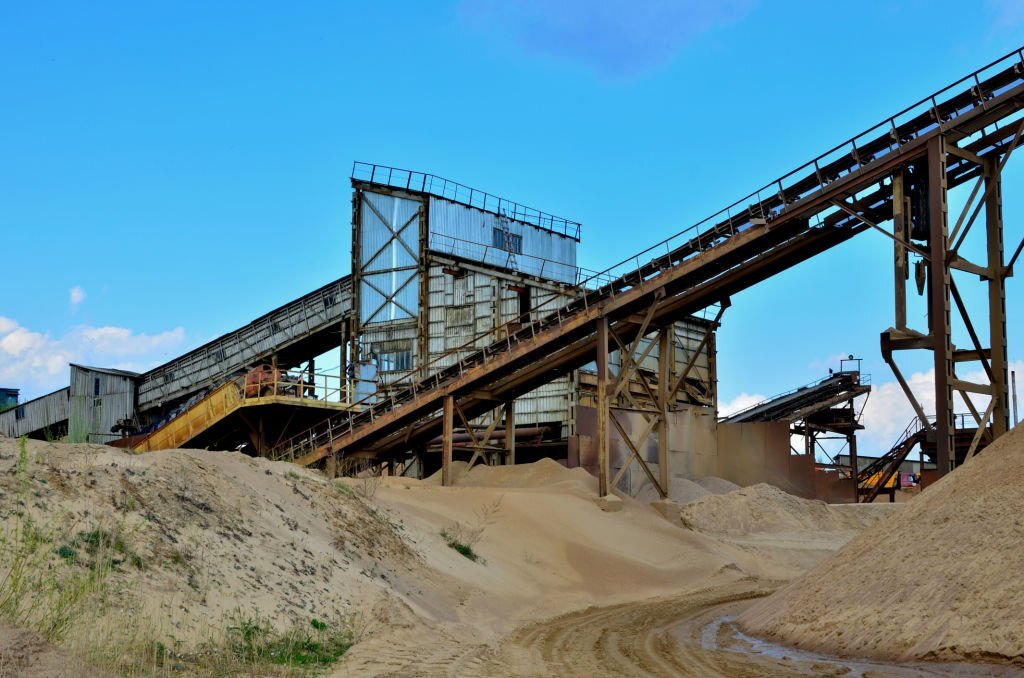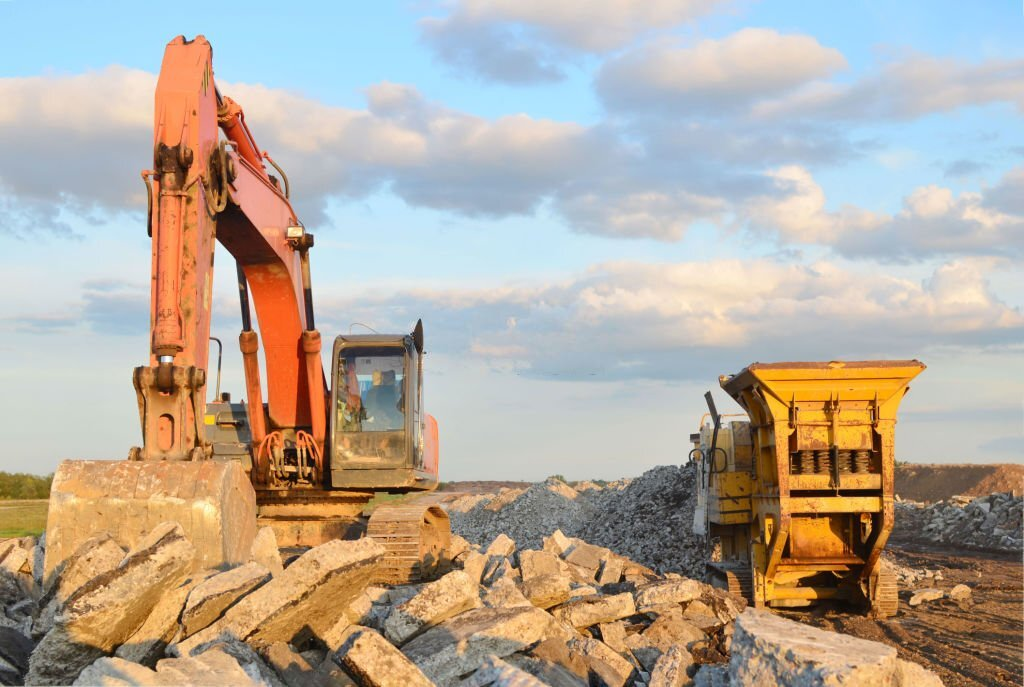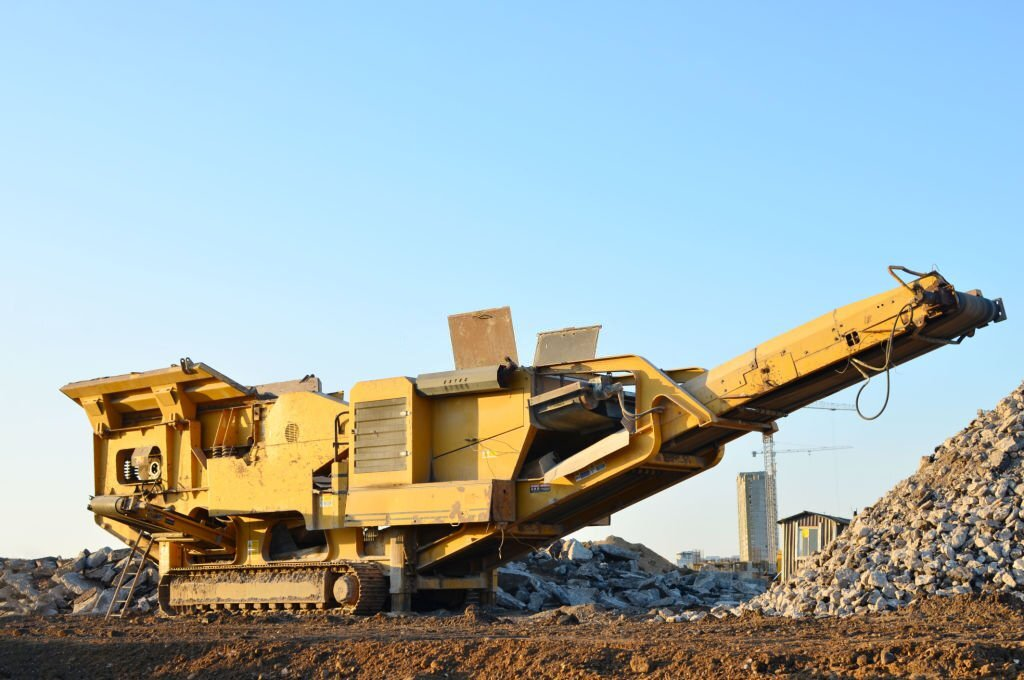When it comes to industries like mining, construction, and recycling, the choice of crushing and screening equipment can make or break a project. Selecting the right machinery is not a decision to be taken lightly, as it impacts efficiency, safety, and overall success. In this article, we’ll explore the essential factors to consider when selecting crushing and screening equipment.

1. Material Type
The first and foremost consideration is the type of material you intend to process. Whether it’s hard rocks, ores, or recycled concrete, the material’s hardness, size, and composition will dictate the kind of equipment required. Ensure that the machinery you choose is well-suited for the specific material it will handle.
2. Production Capacity
Matching the production capacity of your equipment to your project’s requirements is crucial. Choosing equipment with the right capacity ensures that you can process the necessary volume of material without causing delays or disruptions in your operation.
3. Mobility and Portability
For projects that demand flexibility and mobility, opt for equipment that is easily transportable. Mobile crushers and screens are ideal for contractors who work across multiple job sites, offering convenience and cost savings compared to stationary machinery.
4. Efficiency and Productivity
Efficiency and productivity are key performance indicators. Look for features like adjustable settings, automation, and high-speed operation to enhance your equipment’s efficiency. Modern technology, such as automation and remote monitoring, can optimize processes and reduce operating costs.
5. Maintenance and Serviceability
Maintenance is an ongoing requirement for any machinery. Choose equipment that is easy to maintain and provides good access for servicing. Availability of spare parts and a robust service network can minimize downtime and keep your operation running smoothly.
6. Environmental Impact
In today’s eco-conscious world, it’s crucial to consider the environmental footprint of your equipment. Seek machinery that meets emission standards, minimizes dust and noise pollution, and contributes to sustainable practices. Investing in eco-friendly equipment benefits both the environment and your company’s reputation.
7. Safety Features
Safety should always be a top priority. Ensure your selected equipment comes equipped with adequate safety features, such as guards, emergency stops, and user-friendly controls. Additionally, provide proper training to operators to reduce the risk of accidents.
8. Cost of Ownership
Evaluate the total cost of ownership, encompassing the initial purchase price, operating costs, maintenance expenses, and equipment lifespan. Often, a higher initial investment in efficient and durable machinery leads to long-term cost savings.
9. Compatibility with Existing Equipment
If you have existing equipment, like conveyors or crushers, ensure that the new machinery is compatible with your current infrastructure. This consideration can save time and money on modifications and adaptations.
10. Manufacturer Reputation and Support
Choose equipment from reputable manufacturers known for their quality and reliability. Established manufacturers typically offer better support, warranty options, and access to technical expertise.
Crushing and Screening Equipment: Selecting the Right Fit for Raw Materials in Recycling Industries
In the world of recycling industries, the process of turning raw materials into finished products relies heavily on the efficiency and effectiveness of crushing and screening equipment. The selection criteria for such machinery play a crucial role in determining the quality and quantity of the finished product. In this article, we will explore how to choose the right crushing and screening equipment for different material types, with an emphasis on the selection criteria that define the relevant qualifications.

The Role of Crushing and Screening Equipment
Recycling industries create value by transforming raw materials, often in the form of discarded items, into finished products that can be reintroduced into the market. This process involves various stages, and one of the most pivotal steps is the crushing and screening of materials.
Crushing equipment is responsible for breaking down raw materials into smaller, more manageable pieces. This step is essential to prepare materials for further processing.
Screening equipment is then used to sort and separate materials based on size and other characteristics. This ensures that only suitable materials move forward in the recycling process, eliminating contaminants and ensuring the quality of the finished product.
Material Types and Selection Criteria

The choice of crushing and screening equipment should align with the specific material types you intend to process. Different materials, such as plastics, metals, glass, or paper, have unique properties that demand tailored equipment solutions. Here are some key selection criteria to consider:
1. Material Composition
The material’s composition, whether it’s a single material type or a mixture, should guide your equipment selection. For example, plastics may require different crushing and screening approaches compared to metals.
2. Material Size and Hardness
Consider the size and hardness of the materials. Some materials may be brittle and easy to crush, while others, like metals, can be harder and require specialized equipment.
3. Quantity and Throughput
Determine the quantity of material you will be processing and the desired throughput. Select equipment that can handle the expected volume efficiently without causing bottlenecks in your operations.
4. Environmental Impact
Consider the environmental impact of your equipment. Choose machinery that aligns with sustainability goals and minimizes waste and emissions.
5. Qualifications and Skills
To operate and maintain crushing and screening equipment effectively, it’s essential to have qualified personnel with the necessary skills and knowledge. Training and ongoing skill development are critical for safe and efficient operations.
Demonstrating the Selection Criteria
Let’s illustrate the importance of these selection criteria with an example. Suppose you are operating a recycling facility that primarily processes discarded electronic devices. These devices contain various materials, including metals, plastics, and glass. Here’s how you might apply the selection criteria:
Material Composition: You recognize that the equipment needs to handle a mix of materials, so you opt for versatile machinery capable of processing various material types.
Material Size and Hardness: Given the presence of both fragile components and hard metals, you choose crushers and screens that offer adjustable settings to accommodate different material characteristics.
Quantity and Throughput: As your facility deals with a significant volume of electronic waste, you select high-capacity equipment to meet your production demands efficiently.
Environmental Impact: You prioritize eco-friendly equipment with dust control measures to minimize environmental harm.
Qualifications and Skills: Your team undergoes specialized training to operate and maintain the equipment effectively, ensuring safe and productive operations.
Writing Effective Job Descriptions: Tips and Examples to Attract Reliable Candidates
In today’s competitive job market, writing job descriptions that effectively communicate the position’s requirements is crucial for attracting qualified candidates. A well-crafted job description not only describes the role but also sets clear criteria for applicants. In this article, we will explore the essential tips for writing compelling job descriptions and provide examples to demonstrate these principles.

1. Clear and Concise Statements
Tip: Start your job description with a clear and concise statement that describes the position’s primary purpose and role within the company. Avoid jargon and keep it straightforward.
Example: “We are seeking a reliable Customer Service Representative to join our team. The ideal candidate will be responsible for providing exceptional service to our customers, addressing inquiries, and resolving issues.”
2. Detailed Job Descriptions
Tip: Provide a comprehensive overview of the position’s responsibilities, including day-to-day tasks and long-term goals. This helps candidates understand the role’s scope.
Example: “Responsibilities:
Respond to customer inquiries via phone, email, and chat.
Address customer concerns and resolve issues promptly.
Maintain accurate records of customer interactions in our SAP system.
Collaborate with the team to improve customer communication and service.”
3. Define Criteria and Qualifications
Tip: Clearly define the qualifications and criteria candidates should possess. This includes educational background, experience, skills, and any specific certifications.
Example: “Qualifications:
Bachelor’s degree in Business or a related field.
Proven experience in customer service or a similar role.
Proficiency in using SAP or similar customer management systems.
Excellent communication skills, both written and verbal.”
4. Explain the Company and Industry
Tip: Describe your company’s culture, mission, and values. Additionally, provide context about the industry in which your business operates.
Example: “About Us: We are a leading player in the aggregates industry, committed to providing high-quality materials for construction projects. Our team is dedicated to sustainable practices and innovation in our field.”
5. Use Examples and Concrete Details
Tip: Use specific examples to illustrate what the candidate will be responsible for and the impact of their role within the organization.
Example: “You will be responsible for maintaining our website and optimizing it to attract visitors. Your efforts will lead to increased web traffic and higher engagement rates.”
6. Tips for Submitting Applications
Tip: Include clear instructions on how candidates should submit their applications, including the preferred contact method and any required documents.
Example: “To apply, please submit your resume and a cover letter describing your relevant experience and why you believe you are the ideal candidate for this role. Contact us at [email address] for any inquiries.”
7. Screens and Systems
Tip: Mention any specific screens or systems candidates will be working with to give them a better idea of the tools and technology involved in the role.
Example: “You will be responsible for managing our customer database using the SAP CRM system, ensuring accurate and up-to-date information for effective communication.
In conclusion, selecting the right crushing and screening equipment is pivotal for the success of your projects in industries like mining, construction, and recycling. Thoroughly assess factors such as material type, production capacity, mobility, efficiency, maintenance, environmental impact, safety features, cost considerations, compatibility, and the manufacturer’s reputation. By considering these aspects, you can make an informed choice that ensures optimal performance, efficiency, and safety in your operations.

